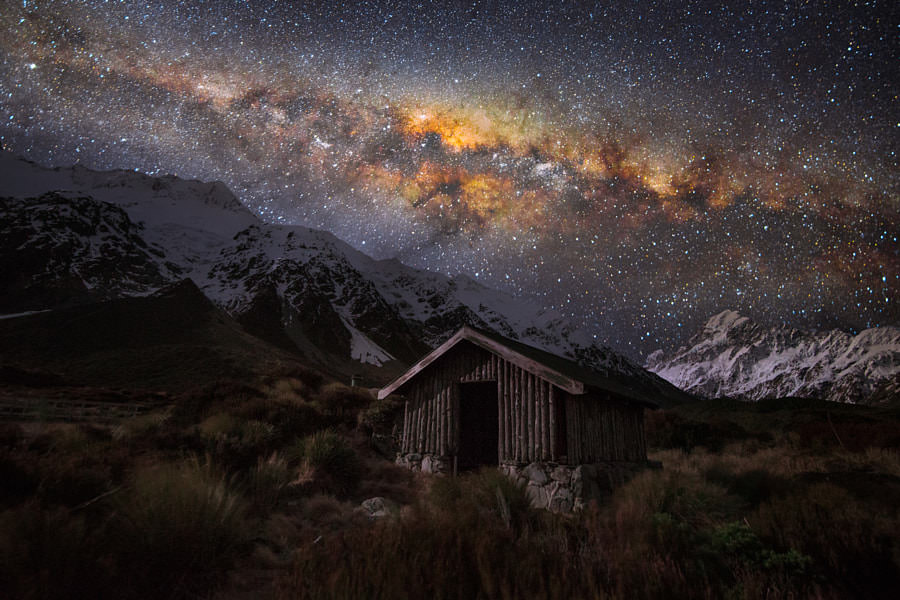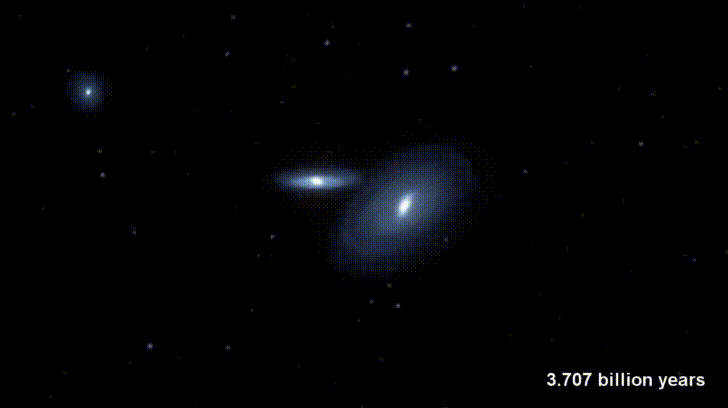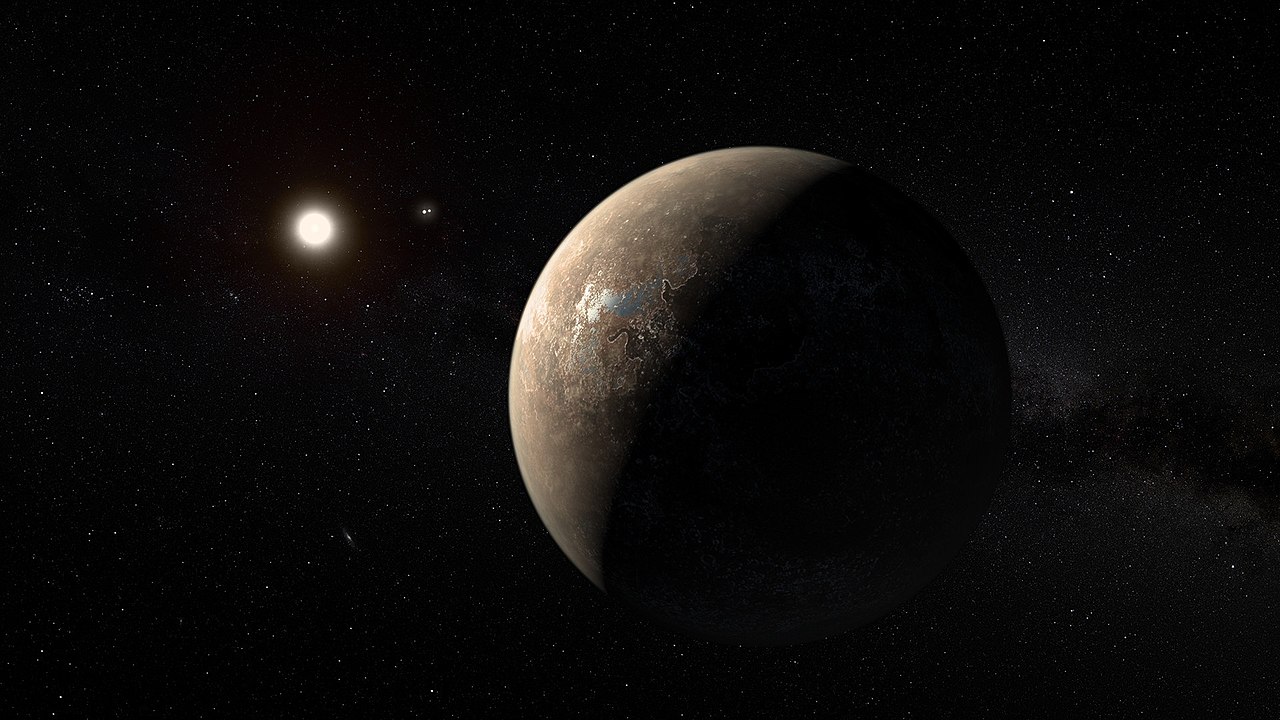A Brief Introduction to Space
It's big. Really, really big...
Contents
"So much universe, and so little time."
— Terry Pratchett
Vast. Boundless. Infinite.
We just can't quite grasp the enormity of the universe. After all, we have nothing to compare it to, because distances on Earth are so tiny in comparison to the distances to the objects that we see in the night sky. Space is so large, and so empty, that it's almost impossible for the human brain to fully understand. But that doesn't mean we can't try!
To truly appreciate the wonders of space, first we need a quick reminder of two things: how the universe is arranged, and the scale we're dealing with when we talk about the universe.

How the Universe is Arranged
Our Solar System
Imagine staring up into space on a very clear night. The brightest things we can see in our night sky are the objects closest to us: the Moon, Venus, Mars, Jupiter, and Mercury. All of these objects are within our solar system, which is made up of the eight planets, and the various other dwarf planets, asteriods, and dust clouds that orbit the Sun.
Venus is the first body we see in the night sky, visible to the west, shortly before sunset. It's so bright because (other than our moon) it's the closest thing in the universe to us.
On a clear night with no moon, we can see far beyond Venus and our other neighbouring planets. The night sky is a carpet of millions of stars. Over 99.99% of everything you can see with the naked eye is located within our galaxy, the Milky Way. Our solar system is about halfway towards the edge of the galaxy, which means that when we look towards the centre of the galaxy we are treated to some incredible sights in the night sky.
Our Galaxy
The Milky Way is made up billions of other solar systems, each with a star at the centre, and planets orbiting that star (our solar system is orbiting a star, too, we just call our star 'the Sun'). We call those planets exoplanets, the name for any planet located outside of our solar system.
The Milky Way is a type of galaxy known as a spiral galaxy. It contains around 100-400 billion stars, and at least that many exoplanets. The galaxy is so wide that it takes light 200,000 years to move from one side to the other. Much like the planets in our solar system orbit the Sun, every star in the Milky Way is orbiting the 'galactic centre', a supermassive black hole known as Sagittarius A* (pronounced Sagittarius A star).
The Universe
Let's zoom out a bit further. Our galaxy is one of billions and billions of other galaxies, spread out across the universe. Even the closest galaxies to us are incredibly far away; The Canis Major Dwarf Galaxy is thought to be our closest neighbouring galaxy, but light from there still takes approximately 25,000 years to reach us. On a very clear night it is possible to see some larger galaxies with the naked eye, for example the Andromeda Galaxy, approximately 2.5 million light years away.

The Milky Way and Andromeda are actually moving towards each other, and eventually the two galaxies will collide. But don't worry, this won't happen for around 4 billion years.
The universe contains everything that exists, and is constantly expanding into infinity in every direction. If you find that hard to comprehend, don't worry! The size of just our solar system is so large that it's hard to imagine, let alone the entire universe.
We'll tackle the enormous scale in the next section.

Questions about the organisation of the universe
-
Rerrange these from smallest to biggest:
[galaxy, solar system, moon, universe, star, planet] - Why do all the stars in the galaxy orbit a black hole at the centre? Why don't they just fly off into space?
The Scale of our Galaxy
When we talk about the universe, the distances involved are enormous compared with anything humans normally deal with. The moon, the closest object to us in space, is approximately 380,000km away. When we talk about the solar system, those numbers very quickly become millions and billions of kilometers. When we talk about the galaxy, we have to use trillions and beyond.
Because of the enormous distances involved, it can be extremely difficult to produce accurate scale models of our solar system. One scale model of the Solar System in Sweden shrinks everything in the solar system by 20 million times, and stretches the length of most of the country. In the UK, the Somerset Space Walk is a smaller, walking-sized scale model. It shrinks everything by 530 million times, but the model is still 11km long!
Remember, these examples only deal with our solar system. The distances to other objects in the Milky Way, for example, exoplanets, are many orders of magnitude larger. But the solar system is a good place to start!
The distances in space are so large that astrophysicists don't use the normal units of distance that we use to measure things on earth.
The three common units used in astrophysics are the astronomical unit (AU), the light year (ly) and the parsec (pc).
- Astronomical unit
-
The astronomical unit is approximately the distance between the Earth and the Sun. This is a useful unit when talking about the solar system, as it gives us an approximation of distances as a ratio. For example, Jupiter orbits the distance at approximately 5.2 AU, which tells us that it is approximately 5 times further away from the Sun than the Earth is. It's also useful for comparing the distances at which exoplanets orbit their stars.
1 AU = ~150 million km - Light year
-
The light year is the distance that light travels in one year. Don't be confused by the fact that the unit contains the word 'year'; the light year is a unit of distance, not time. The light year is useful when discussing distances to other stars and other galaxies.
1 ly = 63,241 AU = ~9.5 trillion km - Parsec
- The parsec is the most commonly used unit in professional astrophysics. It is used to measure distances between stars and galaxies. The parsec has a complicated definition: it is defined as the distance at which 1 AU subtends an angle of 1 arcsecond (1 arcsecond = 1/3600th of a degree). For now, all you need to know is that 1 pc = 3.26 ly.

Let's use these new units to explore our solar system. The model below allows you to scroll to the end of our solar system, scaled down so that the moon is only one pixel. That's about the size of the full stop at the end of this sentence. Notice just how long it takes to get from the Sun to the Earth!
Try changing the units that appear above the scale along the bottom of the model. Remember, when discussing our solar system, astronomical units is a commonly used unit.
Beyond our solar system
The models we've looked at so far have only discussed the size of our solar system, just one of the billions of solar systems that make up the Milky Way. Now that we've covered the units used in astrophysics, we can start to look further afield. We mentioned earlier that the closest solar system to us is the Proxima Centauri solar system, four light years away. That's still tiny compared with the distances between galaxies!
Beyond our galaxy, the scale starts to increase dramatically. We mentioned before that the closest galaxy to us is The Canis Major Dwarf Galaxy, 25,000 light years away. That's 1.5 billion astronomical units!
This next model attempts to compare the sizes of deep space objects, ranging from an astronaut, to an asteroid, to a galaxy, and eventually beyond groups of galaxies, to the entire observable universe.
Ok! Now you've learned all about how the universe is arranged, and the enormous distances involved in the field of atrophysics. What next?
It's time to learn more about exoplanets!
Learn about exoplanets.
Questions about the organisation of the universe
- State the definition of the astronomical unit.
- Suggest what is the astronomical unit used for.
- Explain why astrophysicists use different units to study the universe.
-
Andromeda Galaxy is 2,500,000 ly away. Convert that distance into:
a) parsecs
b) kilometers
About Exoplanets
Exoplanets are planets that exist outside of our solar system. We find them trillions of kilometers away, orbiting distant stars in solar systems of their own.
Although they're a long way away, astrophysicists have developed techniques to help us detect, analyse, and understand the characteristics of thousands of exoplanets in the Milky Way. We can even predict the weather on some of them!
Click the link below to learn more:
